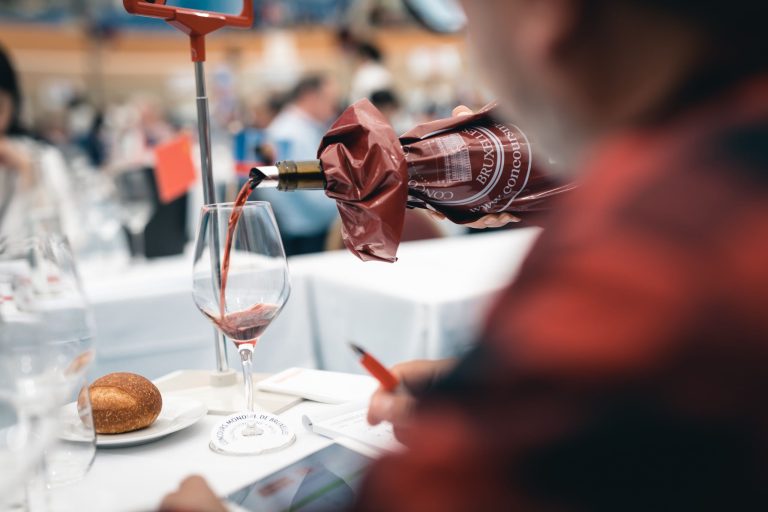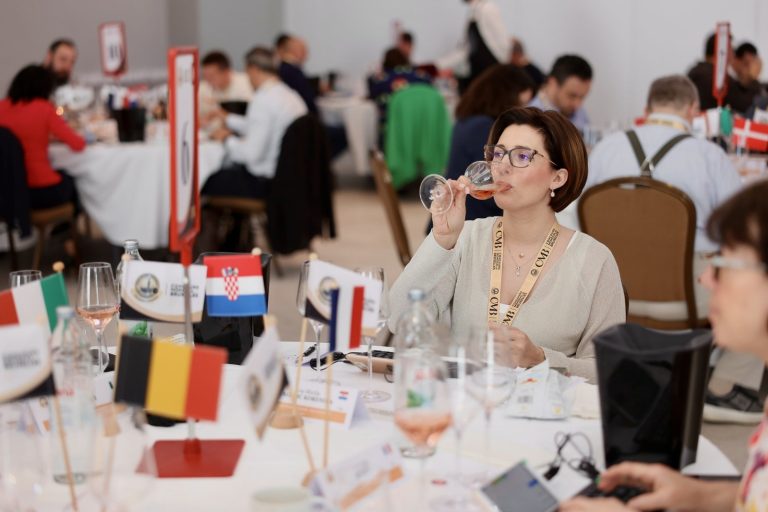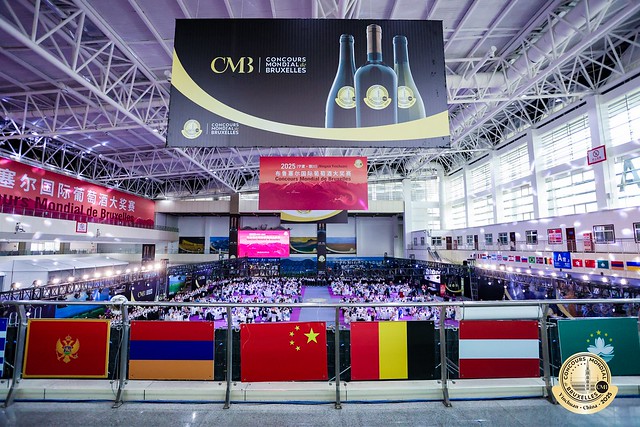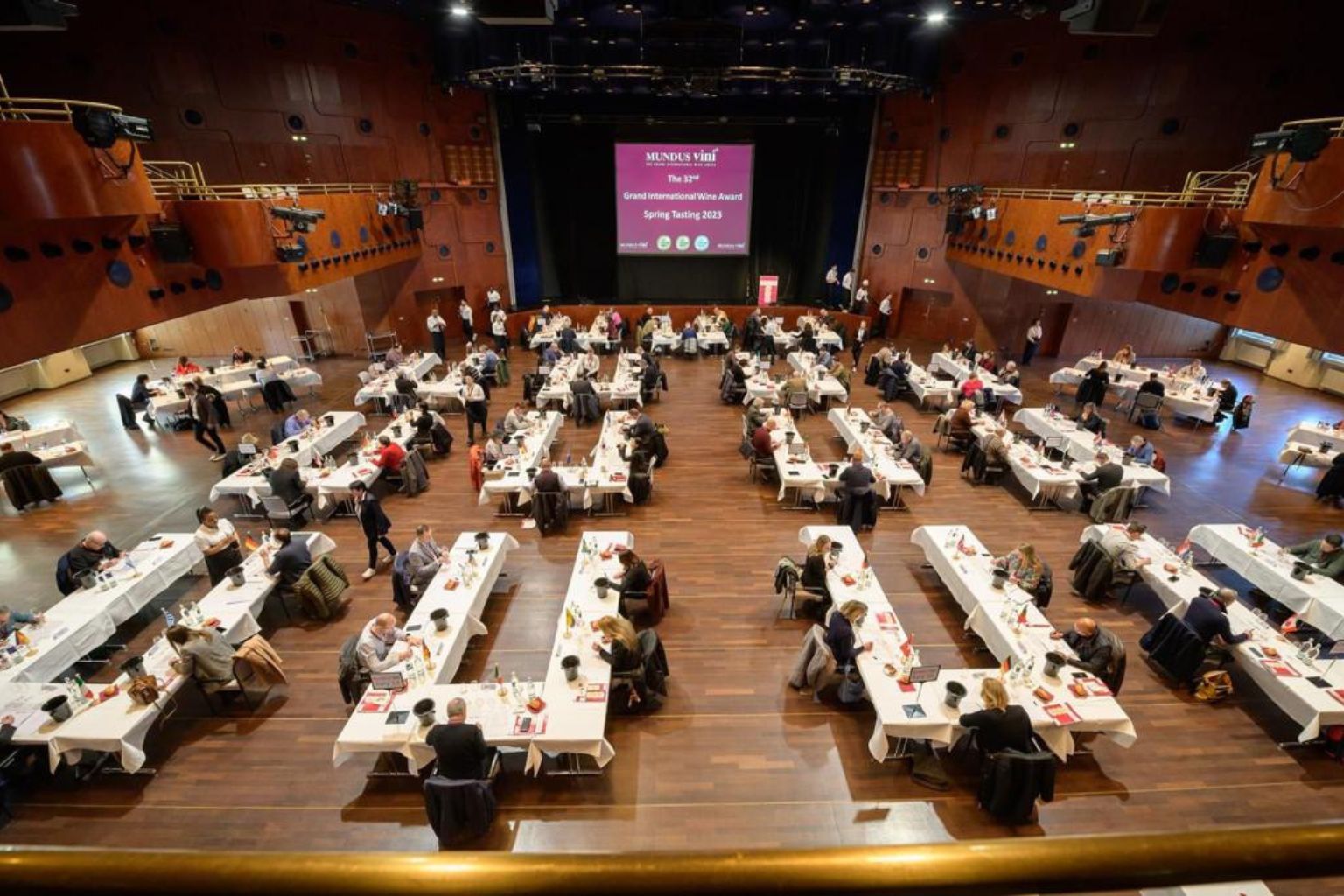How much trust can we place – or should we place – in wine evaluations we read daily or see attached to bottles on the shelf? Very recently, a distributor from Bucharest, a great lover of fine wines, discovered a Margaux wine rated 91 points by Robert Parker and 97 by James Suckling. A difference of at least one quality class, if we go by the symbols.
Others find that a wine flaunting a gold medal (or more), picked up from a store shelf, is in fact rather disappointing. Or, conversely, that a bottle awarded a modest bronze or silver at a lesser-known competition turns out to be exactly to their taste. Do points make our lives easier – or harder – when it comes to wine?
In short: How do points and medals help us understand a wine?
The evaluation of wines through scores and medals has become an essential tool both for professionals and consumers. These ratings or distinctions offer a quick guide to quality and can decisively influence buying decisions.
Before discussing which type of evaluation suits you best, let’s first look at the main ways in which the “value of a wine” is communicated to consumers.
The two classic scoring systems are those up to 20 points and up to 100 points, though both contain a kind of “ballast” – in the 100-point scale, 50 points are often “granted by default,” while on the 20-point scale, wines below 12 points are practically undrinkable.

Jancis Robinson: Faulty at 12 points, perfect at 20
Scara de la 20 de puncte, foarte răspândită în Europa, are rădăcini academice, provenind din sistemul dezvoltat la UC Davis în 1959 pentru scopuri analitice și tehnice. Este utilizată și consacrată de Jancis Robinson, una dintre cele mai apreciate și recunoscute Master of Wine.
The 20-point scale, very widespread in Europe, has academic roots, stemming from the system developed at UC Davis in 1959 for analytical and technical purposes. It is also used and consecrated by Jancis Robinson, one of the most respected and recognized Masters of Wine.
Jancis Robinson admits, however, that while numerical systems are necessary, they are less expressive than descriptive words. For Jancis, the scores given to a wine mean:
20 – Truly exceptional
19 – Remarkable, outstanding
18 – More than just a superior wine
17 – Superior
16 – Distinguished, well-made
15 – Average: a pleasant, correct wine, without flaws, but lacking excitement
14 – Dull, lifeless
13 – Borderline: slightly faulty or unbalanced
12 – Faulty or unbalanced
Robert Parker’s 100 Points
The 50–100-point scale was popularized in the 1970s–1980s by Robert Parker and The Wine Advocate, after which it became the standard for most wine magazines.
In competitions organized under the patronage of the OIV, the main rule is that only one-third of the wines entered can receive a medal. This means that many wines scoring 85–90 points may end up without any distinction at all. When trying to understand what a medal really means, it’s worth checking how many wines were entered in that competition, how long the competition has been running, who the organizers are, etc.
In competitions organized under the patronage of the OIV, the main rule is that only one-third of the wines entered can receive a medal. This means that many wines scoring 85–90 points may end up without any distinction at all. When trying to understand what a medal really means, it’s worth checking how many wines were entered in that competition, how long the competition has been running, who the organizers are, etc.
Moreover, some competitions assess wines in a way that primarily benefits those working in wine retail. For example, the London Wine Competition takes into account not only what’s inside the bottle, but also the brand’s appearance and shelf price.
By contrast, large competitions such as Mundus Vini, Concours Mondial de Bruxelles, International Wine Challenge, Decanter World Wine Awards, or International Wines and Spirits Competition focus exclusively on the intrinsic value of the wine, offering final consumers a guarantee of the jury’s expertise.

So, whom should we listen to?
It is often said that Jancis Robinson is extremely sparing with her scores, while Robert Parker has been criticized for being too generous. James Suckling – who awarded scores between 91 and 85 points to no fewer than 10 wines from Crama DeMatei – is often seen as a model of balance and objectivity, though he himself admits he may be the least rigorous, as he values qualities such as harmony and the “beauty” of a wine.
On the other hand, Italian critic Luca Maroni rarely gives less than 92 points, with most of his top-rated wines sharing a similar style: extractive reds, often jammy, with significant residual sugar.
For those at least somewhat initiated, on their way to becoming connoisseurs, our advice is: choose a critic (none of the above gives the ratings single-handedly – each has a large team whose members award scores consistent with the “leader”), and observe whether you share the same taste. Or pick a magazine, which might rate wines with stars, glasses, leaves, bottles, and so on.
For those lost in front of a shelf, medals are, at worst, proof that dozens of experts from around the world considered that wine good enough to deserve recognition. At the very least, it’s a starting point. Generally, standard medals mean:
– Gold – exceptional quality
– Silver – very good, well-balanced wine
– Bronze – correct and pleasant wine
– Trophy / Best in Show – the highest distinction, certainly a remarkable wine, though it may not suit everyone’s taste.
One caveat: a gold medal in a competition that also awards double golds, diamonds, or “grand diamonds” signals a lower score than in a competition where gold is the highest possible award and only a handful of such medals are given.

On the Role of the OIV and International Patronage
The most prestigious international wine competitions are held under the patronage of the OIV, which guarantees:
– compliance with unified and objective tasting methodologies;
– the use of blind tastings with international expert panels;
– transparency and fairness in the judging process.
Thus, a medal earned in an OIV-recognized competition is a guarantee of international quality.
Conclusion: A Grape That Tests - and Rewards - the Brave
Whether we’re talking about scores or medals, all these systems share the same purpose: to provide a reference point for wine quality.
Top critics (Robinson, Parker, Suckling) influence mainly connoisseurs, traders, and investors
International competitions under the patronage of the OIV speak directly to the wider public and guarantee fairness through standardized rules
But, as we like to say, the best wine is the one you enjoy. Keep exploring, keep tasting, and let your own palate be your guide!








